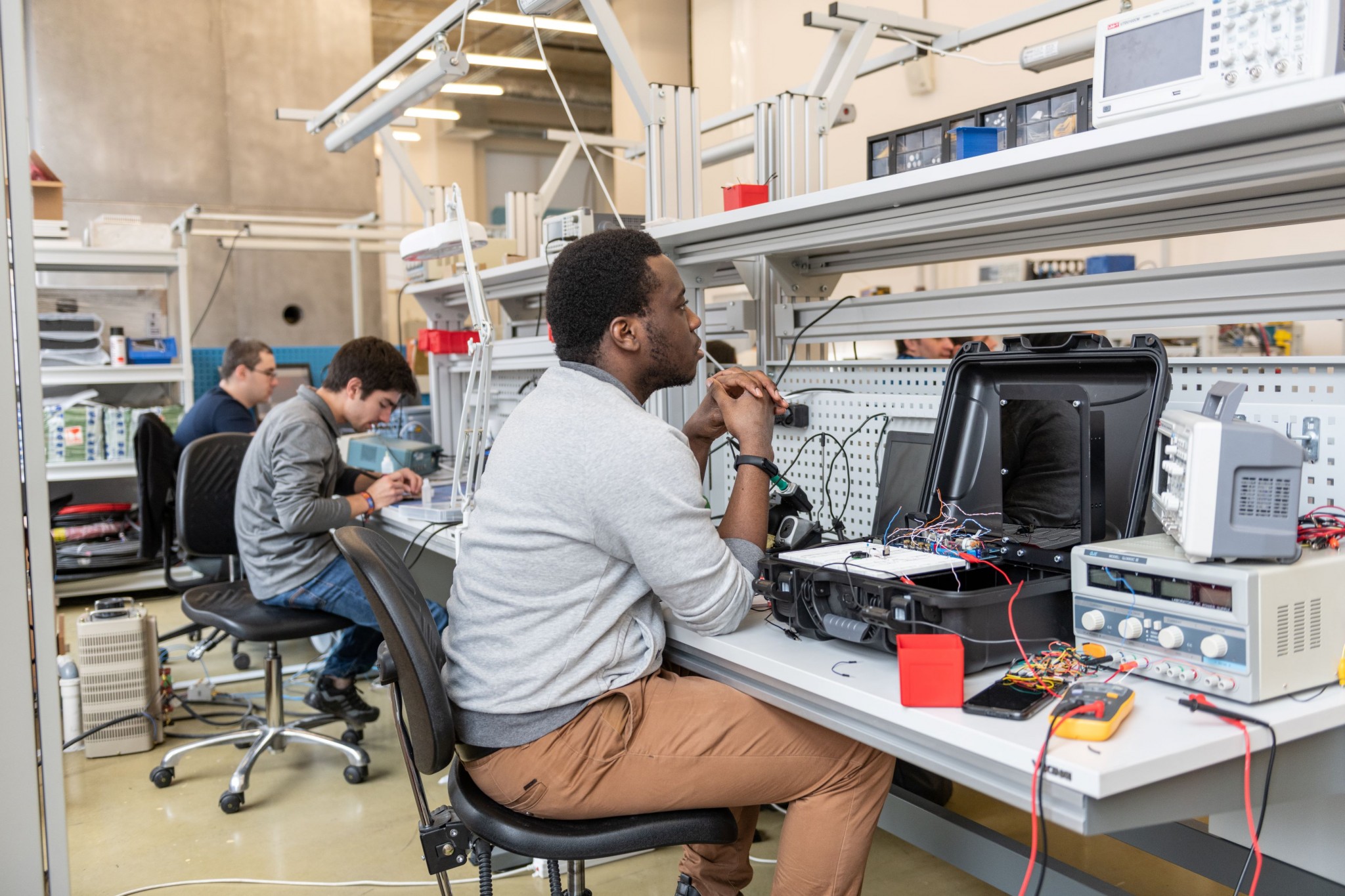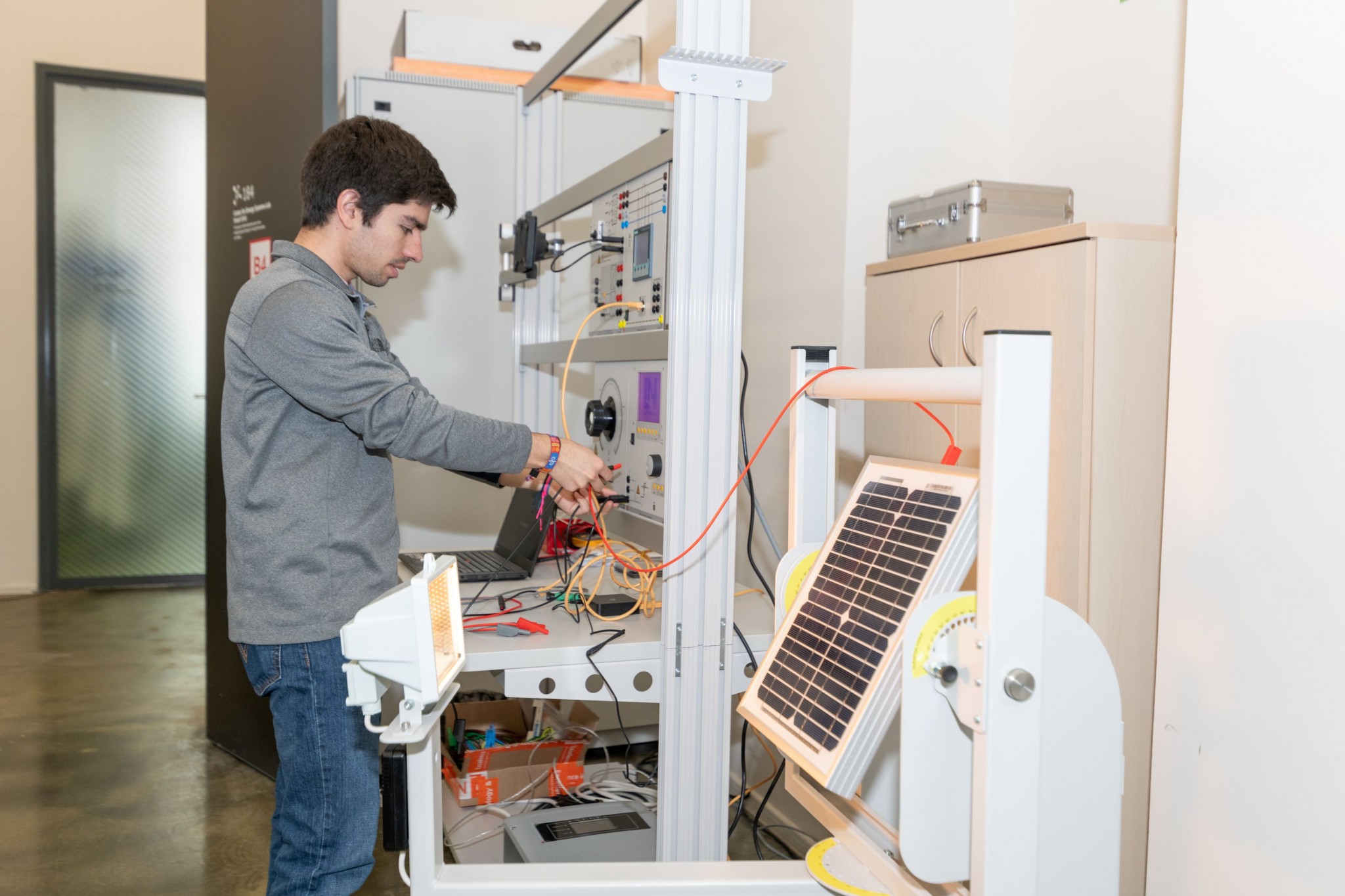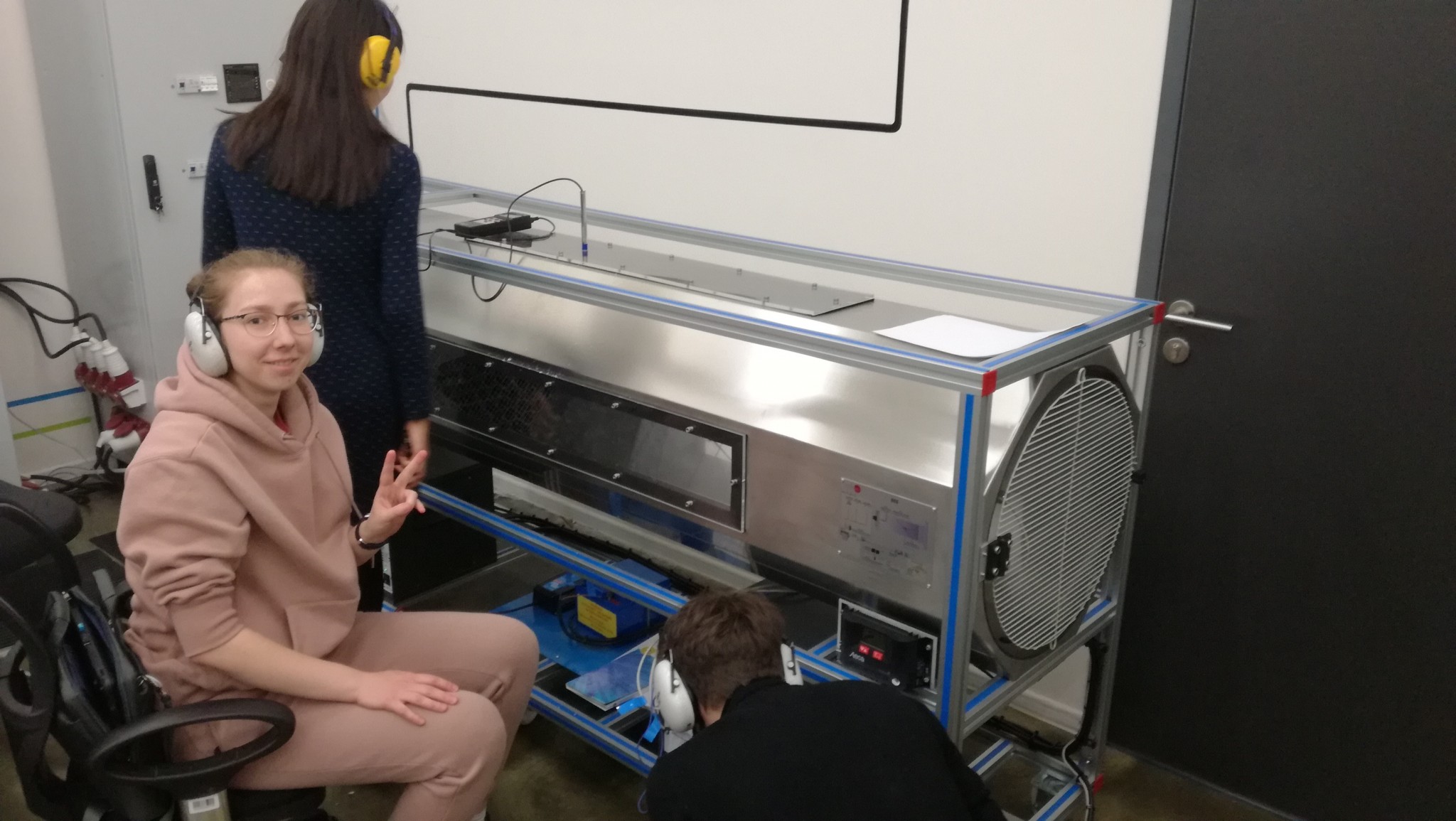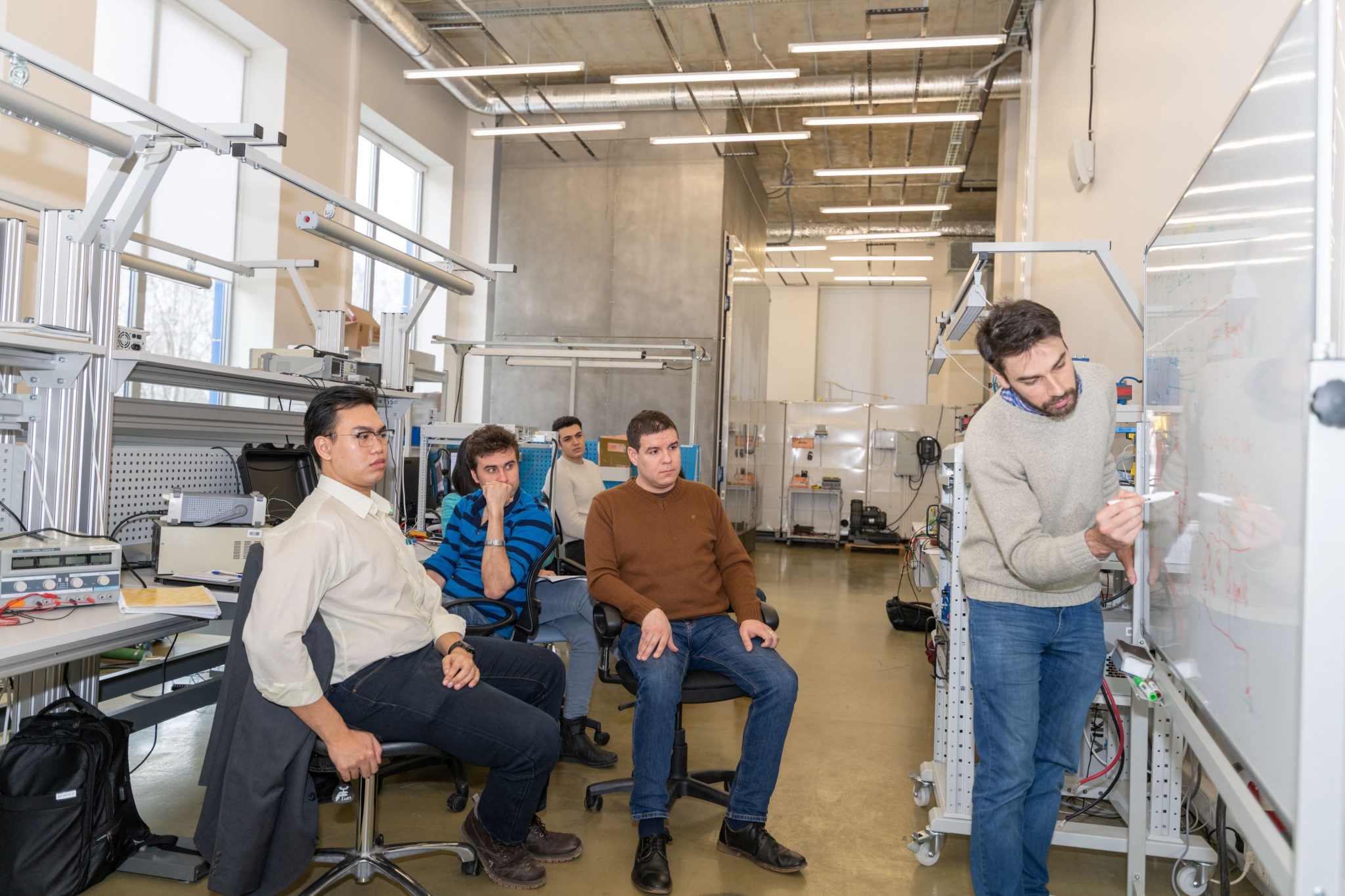Courses
Prof. Federico Ibanez delivers two courses per year: power electronics (6ECTS) and smart grids (6ECTS). The courses are divided in lectures and laboratory practices. Thus, students can transfer the knowledge from the classroom to the real world. The experimental lectures started in December 2017 with the first power electronics course, since that every year the course was performed 50% in the power electronics lab. Then, the second experimental course, smart grids was introduced in March 2019 (Term 4). Both courses belong to the Energy Systems Master program and can be taken for MSc and PhD students.
Power electronics course
The power electronics course gives an overview of different power structures including rectifiers, DC/DC converters and inverters. The course is divided in three parts, the lectures where students learn the fundamentals of the field, simulations which are mainly performed as hometask to pre-validate the student designs and the experimental lectures. In the experimental lectures, some of them are guided in order to be familiar with the instruments and to know the capabilities of the laboratory and the last one is a project to design a real convert at a reduced power. Students works at low voltage and power, lower than 24V/50W in a safety environment. There, they train their skills with the electronic equipment such as oscilloscopes, multimeters, active probes, signal generators, impedance meters, etc.
 |
Smart grids course
In the smart grids course, the students get knowledge of the modern power systems. The course covers the integration of renewable energy in the grid by means of power inverters. For that reason, it is imporant to take the power electronics course before. In addition, the course reviews the concepts of solar and wind generation from the point of view of the grid. Thus, students understands the limits and capabilities of the technology. At the end of the course, control algorithms a power system are reviewed, with emphasis in the power sharing among inverters, because inverters are the key element of grid of the future, with reduced inertia due to the lack rotating elements. As in the power electronics course, students receive lectures and then go to the laboratory to experiment wth solar and wind generation. After that, they explore energy storage systems and finally, they measure different parameters of a real microgrid.
 |
 |
 |
 |
